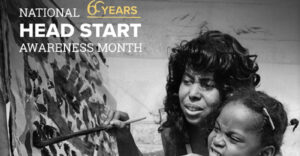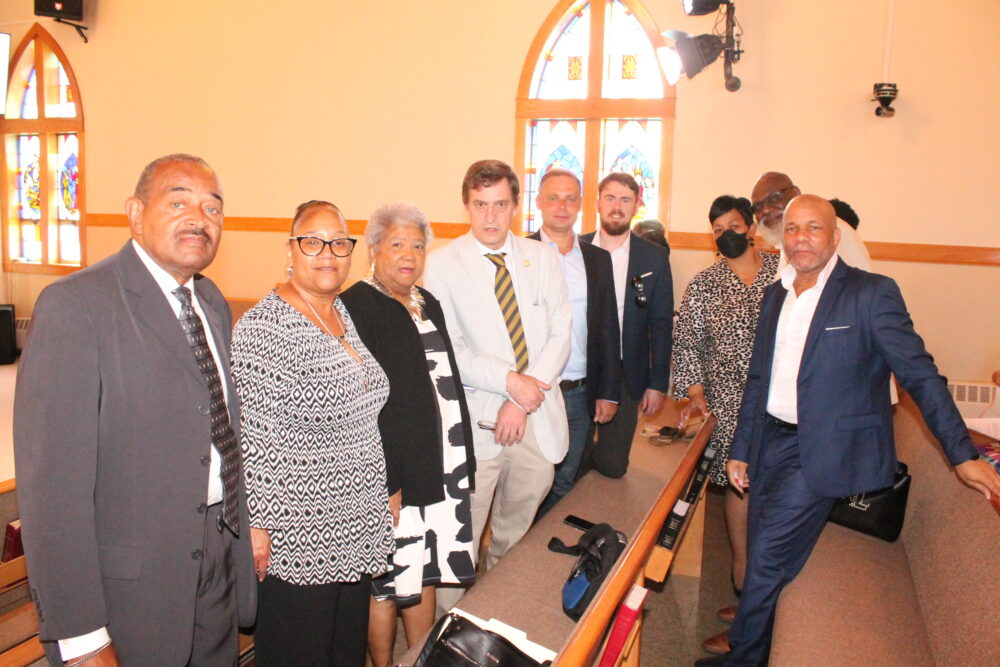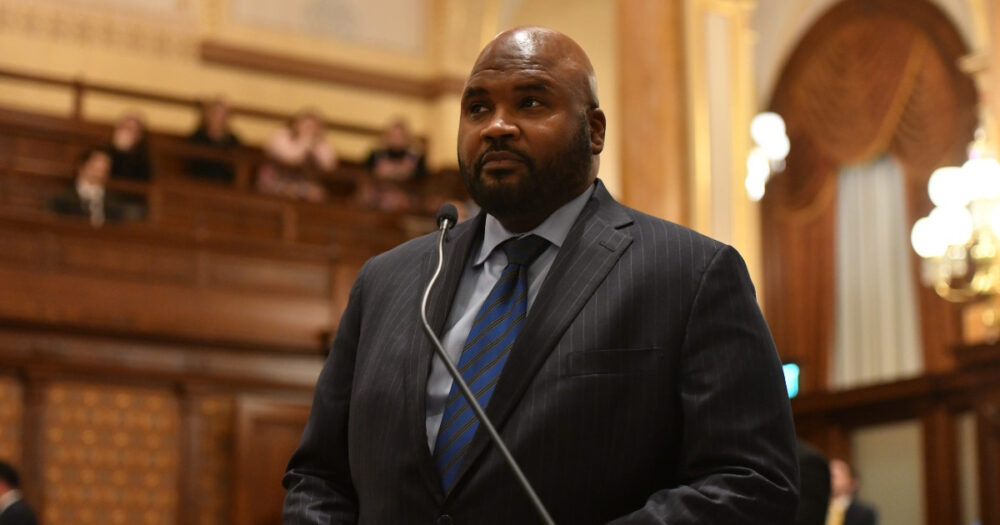At the end of the CTA Blue Line, a refuge of sorts has taken shape for homeless riders with few other places to go.
Once a week, late at night, service providers at folding tables set up on the first floor of the Forest Park station help those sleeping on trains apply for ID cards and provide basic medical care. For riders like Michelle Mitchell, it’s a chance to pick up food and socks and get help finding a more accessible brand of her prescribed medication.
Advertisement
The Forest Park station services are one of several supports Mitchell has discovered in the year since she began staying on the train. She’s learned to travel with a trusted group for protection from those looking to steal from her or harass her. And she’s learned morning rush hour is the best time to sleep because overnight she has been prevented from riding continuously from one end of the Blue Line to the other, meaning she has to get up and switch trains.
Over the year she’s also watched as the number of other riders sleeping on the train seemed, to her, to grow.
Advertisement
CTA has long been a shelter of last resort for homeless riders, especially in cold weather and especially on the Red and Blue lines, which offer 24-hour service. But passengers sheltering on trains have become more visible during the COVID-19 pandemic as the number of office commuters dropped and as finding space in shelters or other typically reliable options became challenging. Homeless passengers have drawn heightened attention from the city, CTA and other riders over the past two years.
Still, it is unclear whether the number of people living on CTA trains is rising, and data is hard to come by. The Night Ministry, which provides the services at Forest Park and sets up a similar program on the Red Line, typically served more people weekly in the first months of 2022 than the year before. But agency representatives say that likely reflects passengers becoming more familiar with the organization and more comfortable seeking services, as well as better documentation of clients as the program got up and running.
CTA has received more complaints of homeless riders this year, but spokeswoman Catherine Hosinski said that could be because overall ridership is up and more people might be making complaints.
Complaints about rulebreaking and violent crime on the CTA are also up. But Sam Guardino, homeless outreach program director at Thresholds, said the clients his agency works with don’t generally commit violent crimes on public transit, though some get tickets for breaking rules, like smoking.
Advocates point to a number of recent factors that might be causing people to live on trains, and to seek nontraditional shelter citywide. Space in shelters remains limited, they said, with slightly fewer city-funded beds available than pre-pandemic. Some people also remain reluctant to go to shelters because of sometimes strict rules or continuing fear of COVID-19. Some who were staying with friends or family might have been asked to leave as the virus spread.
Some, like Mitchell, don’t feel safe in shelters. Mitchell said she became homeless after her husband was fatally shot and she was no longer able to stay with his family. She sent her daughter to live with family out of state and stayed in a shelter for a time, but she said her ID was stolen there and lamented the conditions.
“It’s no better,” she said.
Now that it’s getting warmer, she hopes to get a tent to stay in.
Advertisement
The city ramped up its outreach during the pandemic. The Chicago Department of Public Health began funding the Night Ministry pilot program in January 2021, and the Department of Family and Support Services adjusted its homeless outreach efforts to include measures like providing protective gear and connecting people to vaccines and testing. DFSS funds Thresholds’ work on the CTA, and asked that agency and others to modify their work in the early days of the pandemic, Guardino said.
CTA, for its part, partners with the city and service agencies to work with homeless riders, Hosinski said.
“The issue of homelessness is not limited to CTA,” Hosinski said. “It is something that affects our overall society. It is a holistic issue that required a holistic approach in response.”
CTA is also talking with the city about how to amplify and provide additional resources to address issues related to mental health and homelessness, President Dorval Carter recently told agency board members. Hosinski said CTA is part of a citywide conversation.
Similar work has long been underway. Thresholds has for years worked to deeply engage CTA riders who are homeless and have serious mental illness, Guardino said, helping them pursue housing, benefits, medical care and mental health treatment. Substance abuse and mental illness are not universal among homeless riders, but he said they are prevalent challenges.
“I think that we have to deal with this, kind of (provide) treatment on demand,” he said. “And people are seeing a lot of that right now. And it looks messy, it looks ugly.”
Advertisement
A man was overdosing on opioids inside a train that rolled into the Forest Park station around 11:30 p.m. on a recent weeknight. He was slumped against the train door, his barely open eyes showing only the whites, not breathing.
Crouched next to him inside the stopped train was a substance use specialist with the Night Ministry, who administered overdose-reversing naloxone once, then again. On the advice of a doctor and with the help of medical students volunteering with the organization, the specialist administered a third dose.
With a roar, the man came back. He roared again, as the specialist cooed, “You’re OK, you’re OK.”

Eventually, the man stood up and left the train with Night Ministry workers and emergency responders. Declining an emergency room visit, he walked across the platform and boarded an inbound train heading toward the city.
The specialist, fearing he would overdose again once the naloxone wore off, alerted a CTA employee and pressed the overdose-reversing medication into the hands of someone else getting on the same train. Just in case.
It was at least the second or third overdose Yoela Tepper had responded to in six months of working weekly at the station. Guardino, of Thresholds, said a likely uptick in opioid use among homeless riders mirrors an uptick nationwide.
Advertisement
Another challenge some homeless riders face are mental health concerns, he said. Many people with mental illness are less noticeable to other passengers, and are likely to remain by themselves, guarded, he said. But riders having a mental health crisis are more visible.
“People see the people who stand out,” he said. “The answer is, even before people experience homelessness, to have the treatments they need.”

Corey Long, who has lived for years on trains and in shelters, said he began living on the trains because of “very bad decision making” and drug use. When he sleeps on the train, he usually wakes up to find at least one of his belongings has been taken, like his phone.
“It’s not exactly safe,” he said. “But to the homeless person that’s been doing it a long time, it’s safe enough.”
On a recent weeknight, each screech of a train pulling into the station brought a new wave of potential clients down the stairs from the platform to the Night Ministry’s tables. Some were newcomers, and some were regulars. One man arrived looking for a follow-up appointment with a dentist, who makes occasional visits with the organization.
On one side of the station, they lined up to wait for chips, snacks and turkey-and-cheese sandwiches with packets of yellow mustard. Socks, sunscreen and hygiene and first-aid kits were also available.
Advertisement
That night, the organization also found itself with containers of roasted vegetables, rice and black beans. When Long reached the front of the line, a Night Ministry worker asked if he liked vegetables. Not really, he said, opting for a sandwich instead and then moving on to the next line.
There, he waited for harm reduction supplies, like clean needles, pipes, fentanyl test strips, sanitizing wipes and naloxone. Then he moved over to the line for the case manager, who can help clients apply for ID cards and housing. Behind a privacy divider nearby, medical students and a doctor were available to provide care.

Supplies obtained, Long left the station, hoping to stay with a friend for a night or two.
The type, variety and frequency of services has changed over the year and a half of the Night Ministry’s pilot program, but it has settled into something similar to what Long experienced, offered at both the Forest Park station on the Blue Line and the Howard station at the north end of the Red Line.
The pilot program is part of an expanded office of mental health at the Chicago Department of Public Health, and an increasing focus on a variety of services across the city, said Katherine Calderon, director of public health operations at CDPH. The people the Night Ministry works with were among the most vulnerable people at the start of the pandemic, relying on in-person programs and care that became unavailable as the city shut down.
Among the highest needs the Night Ministry has reported to CDPH, based on surveys of their clients, are housing, winter clothing and clean syringes and pipes, Calderon said. Also needed are clean clothes, food and a shower. Psychiatric services are a priority, but finding a psychiatrist who can work late night hours has been a challenge, she said.
Advertisement
The hope, eventually, is to turn the pilot into a longer-term program on CTA, Calderon said. It would be one way for people in need to tap into a variety of other city services, like care and housing.
“It’s a service that provides accessibility where there’s none,” she said. “And we’re talking about some of our most complex, vulnerable people.”
Improving the availability of housing is essential to reducing the number of people sleeping on trains, advocates say. Calderon said a plan is in the works to provide temporary beds for people who would otherwise go to the emergency room or jail because of untreated mental illness.
Advocates also highlighted a program started during the pandemic called the Expedited Housing Initiative, designed to get people into housing quickly and create a path to permanent housing. Programs that require little paperwork and that include units spread across the city are key, Guardino said.
The Chicago Coalition for the Homeless has proposed another option: raising the city’s real estate transfer tax on properties valued at more than $1 million, and using the increase to create funding for permanent housing services. The proposal has gotten little traction in city government.
“You can do outreach all you want to people on the trains, but if you don’t have a permanent housing option to offer them, then they’re not going to stop sleeping on the train,” Julie Dworkin, policy director for the coalition, said.
Advertisement
Some on the CTA have had success with housing. Mitchell said she was recently accepted into a housing program and was waiting for more information.

But Silas Ratliff, who goes by Kodak, doesn’t know where he would stay if the trains weren’t an option. He has been rejected by some shelters for not meeting qualifications or failing to arrive on time, he said.
The train, at least, offers a chance to move and see some scenery. But there’s no place to safely keep any belongings he manages to accumulate.
“The main thing for me right now is just the shelter part,” he said. “That plays a big part in your daily activities, your routine, if you will. It affects your normal routine, when you don’t really know where you’re going to be.”
For riders who encounter someone in crisis on the train, experts with Thresholds, CTA and Chicago Coalition for the Homeless offer recommendations on how to respond:
- If a rider’s safety is threatened, call 911. In situations where that isn’t immediately feasible, riders should exit at the next stop. Once off the train, they should either get the attention of the train operator by waving an arm or walking toward them, seek out the station attendant, or call 911.
- If someone seems in distress but the situation is not life-threatening, call 311 and ask for a wellness check for the person.
- Riders should take action to help resolve a crisis, but should not put themselves in harm’s way.
- When contacting responders, keep in mind the train line, the approximate time, direction of travel and, if possible, rail car number.







